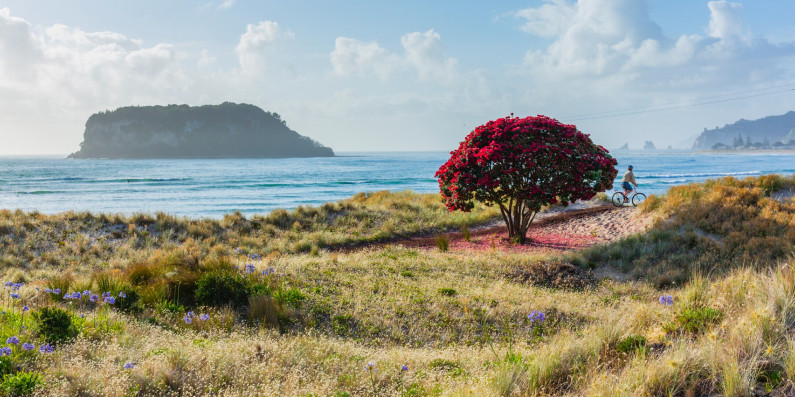
New report highlights pressures on Aotearoa New Zealand’s climate
Greenhouse gas emissions from human activities are changing Aotearoa New Zealand’s climate, impacting the environment, communities, and the economy, according to a new report.

Greenhouse gas emissions from human activities are changing Aotearoa New Zealand’s climate, impacting the environment, communities, and the economy, according to a new report.
The Ministry for the Environment and Stats NZ have released the latest, three-yearly update about the state of Aotearoa’s atmosphere and climate.
Our atmosphere and climate 2023 provides further evidence that emissions from human activities are putting pressure on our climate, which is adversely impacting the environment, communities, Māori interests, infrastructure, and the economy.
The Ministry’s Deputy Secretary – Joint Evidence, Data and Insights Group, Natasha Lewis, says eight of the ten warmest years recorded in Aotearoa up to 2022 have been in the last decade.
“Even minor changes in our climate can have big effects on our environment. Rising temperatures have a significant effect on agriculture, energy demand, ecosystems, and recreation,” she says.
Aotearoa is also experiencing variations in rainfall, more frequent droughts and ocean warming to record levels. Glaciers are in retreat and sea levels around parts of the country rose twice as fast in the last 60 years as they did in the previous 60 years. The frequency of extreme temperature events in Aotearoa has doubled due to human activities.
“This has consequences for the things we value most, our safety and security, the places we live, our livelihoods and economy and our wellbeing.”
About 750,000 New Zealanders and 500,000 buildings worth more than $145 billion are near rivers and in coastal areas already exposed to extreme flooding. Major urban centres, sites of cultural significance, taonga (treasured) species, and food security are also at risk in these areas.
“Many sectors of our economy rely on natural resources such as water, which depend heavily on rainfall and temperature or are in areas that are prone to flooding. The cost of responding to extreme weather events is likely to increase.”
A key theme of the report is the impact that climate change is having on biodiversity and ecosystems. This natural infrastructure acts as a buffer against the worst effects of climate change. For example, restored wetlands can absorb the shock of storm surges and help to protect communities against sea level rise. Native forests and restored floodplains reconnected to wetlands can slow and retain water during storms, helping to reduce flooding.
“Human activities are driving biodiversity losses. It is now a question of how close we are to tipping points, beyond which large and, in some cases, irreversible changes will be unavoidable.”
Building on Our atmosphere and climate 2020, this report also includes a series of evidence-based assessments about the outlook for atmosphere and climate.
“Looking ahead, as well as behind, represents an important shift in our approach to environmental reporting. We hope that this information helps people and organisations to understand climate change better and plan for the future.”
The report brings together recently updated Stats NZ indicator data and insights from research literature to highlight pressures on the atmosphere and climate. These can cause, or contribute to, changes in the state of the environment, which have various impacts. Key insights from the report include:
Alongside the Our atmosphere and climate 2023 report, the Ministry has also used the digital storytelling platform ArcGIS StoryMaps to look at the impacts our changing climate is having on the plants and animals that call Aotearoa New Zealand home.
Four stories, which include, photos, maps, videos, graphics and interactive features, show how climate change is causing:
Waikato University’s Science Learning Hub has also produced resources for teachers and students to complement the official report.
For further information and requests for comments about the report, contact the Ministry for the Environment media team:
For technical information about the environment indicators, contact the Stats NZ media team:
The Environmental Reporting Act 2015 requires the Ministry for the Environment and Stats NZ to publish environmental domain reports independently of Ministers of the Crown.
The Act also sets the publication cycles for reports and these cannot be changed. Our last two reports on atmosphere and climate were published in October 2017 and October 2020. Our atmosphere and climate 2023 updates these reports and continues the three-yearly reporting cycle.
For more information see Environmental-reporting